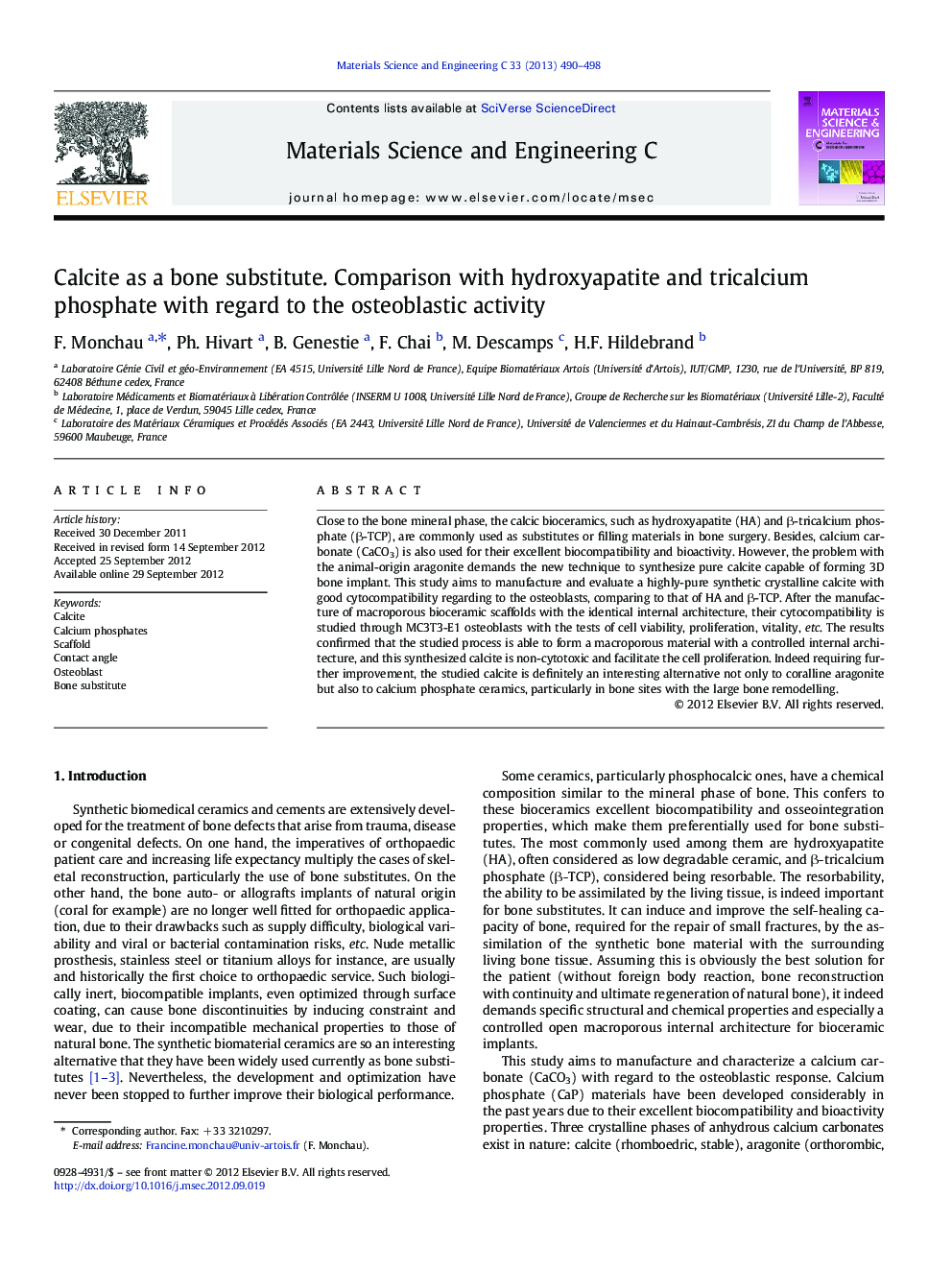| Article ID | Journal | Published Year | Pages | File Type |
|---|---|---|---|---|
| 1429100 | Materials Science and Engineering: C | 2013 | 9 Pages |
Close to the bone mineral phase, the calcic bioceramics, such as hydroxyapatite (HA) and β-tricalcium phosphate (β-TCP), are commonly used as substitutes or filling materials in bone surgery. Besides, calcium carbonate (CaCO3) is also used for their excellent biocompatibility and bioactivity. However, the problem with the animal-origin aragonite demands the new technique to synthesize pure calcite capable of forming 3D bone implant. This study aims to manufacture and evaluate a highly-pure synthetic crystalline calcite with good cytocompatibility regarding to the osteoblasts, comparing to that of HA and β-TCP. After the manufacture of macroporous bioceramic scaffolds with the identical internal architecture, their cytocompatibility is studied through MC3T3-E1 osteoblasts with the tests of cell viability, proliferation, vitality, etc. The results confirmed that the studied process is able to form a macroporous material with a controlled internal architecture, and this synthesized calcite is non-cytotoxic and facilitate the cell proliferation. Indeed requiring further improvement, the studied calcite is definitely an interesting alternative not only to coralline aragonite but also to calcium phosphate ceramics, particularly in bone sites with the large bone remodelling.
Graphical abstractFigure optionsDownload full-size imageDownload as PowerPoint slideHighlights► Macroporous calcite manufacturing with controlled architecture as bone substitute ► Cytotoxicity: adaptation of the colony-forming method with the target cells: MC3T3-E1 osteoblasts ► Study of osteoblast proliferation and activity on calcite, HA and TCP
